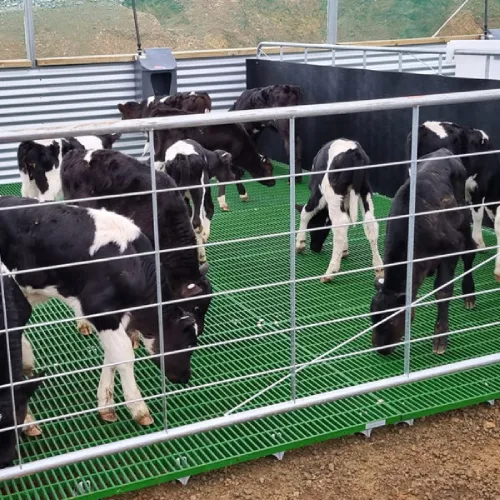loading...
- No. 9, Xingyuan South Street, Dongwaihuan Road, Zaoqiang County, Hengshui, Hebei, China
- admin@zjcomposites.com
- +86 15097380338
- Welcome to visit our website!
frp structural sections
The Evolution and Significance of FRP Structural Sections
Fiber Reinforced Polymer (FRP) structural sections have emerged as a pivotal advancement in the field of civil engineering and construction. These innovative materials combine high strength, lightweight properties, and corrosion resistance, making them an attractive alternative to traditional materials like steel and concrete. With an increasing demand for sustainable and durable building solutions, understanding the characteristics and applications of FRP structural sections is essential.
The Evolution and Significance of FRP Structural Sections
One of the most significant advantages of FRP structural sections is their lightweight nature. This characteristic simplifies transportation and installation processes, reducing construction time and labor costs. Additionally, FRP components can be prefabricated, further enhancing efficiency. The lightweight nature of FRP also results in lower dead loads on structures, allowing for innovative design possibilities. Architects and engineers can explore new designs without the constraints imposed by traditional materials.
frp structural sections

Furthermore, FRP materials exhibit remarkable resistance to environmental factors, including moisture, chemicals, and UV radiation. Unlike steel, which is prone to rust and degradation over time, FRP maintains its integrity in harsh environments, making it ideal for marine applications, wastewater treatment facilities, and chemical processing plants. This longevity translates into reduced maintenance costs and longer service life for structures, aligning with the growing emphasis on sustainability in construction.
The applications of FRP structural sections are vast and varied. In infrastructure, FRP is increasingly being used in pedestrian bridges, railings, and boardwalks due to its corrosion resistance and aesthetic versatility. In the energy sector, composite materials aid in the development of wind turbine blades, enhancing efficiency and longevity. Moreover, the construction of temporary access structures for maintenance in harsh environments showcases the adaptability of FRP.
Challenges do exist with the use of FRP, primarily related to design codes and regulations, which are still evolving to accommodate these innovative materials. The initial cost may also be a hurdle for some applications; however, the long-term benefits and cost savings often outweigh these initial investments.
In conclusion, FRP structural sections represent a leap forward in construction technology, offering myriad benefits over traditional materials. As we continue to face challenges related to sustainability and infrastructure durability, the role of FRP in modern engineering will undoubtedly increase. With ongoing research and development, the future is promising for FRP applications, paving the way for innovative solutions that balance functionality, sustainability, and cost-effectiveness. As the industry adapts to these advancements, FRP will undoubtedly play a crucial role in shaping the built environment of tomorrow.
-
GRP Structures: The Future of Lightweight, High-Performance EngineeringNewsJun.20,2025
-
FRP Water Tank: High-Performance Storage for Corrosive and Clean Water SystemsNewsJun.20,2025
-
FRP Square Tube: The New Industry Standard for Chemical and Structural ApplicationsNewsJun.20,2025
-
FRP Pultruded Profiles: The Ultimate Choice for Lightweight Structural StrengthNewsJun.20,2025
-
FRP Handrails: The Safer, Smarter, and Stronger Choice for Modern InfrastructureNewsJun.20,2025
-
FRP Grating: The Smart Solution for Durable, Lightweight Industrial FlooringNewsJun.20,2025
-
Why Choose a Galvanized Water Tank for Your Storage NeedsNewsMay.21,2025
